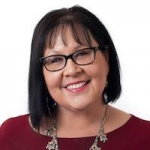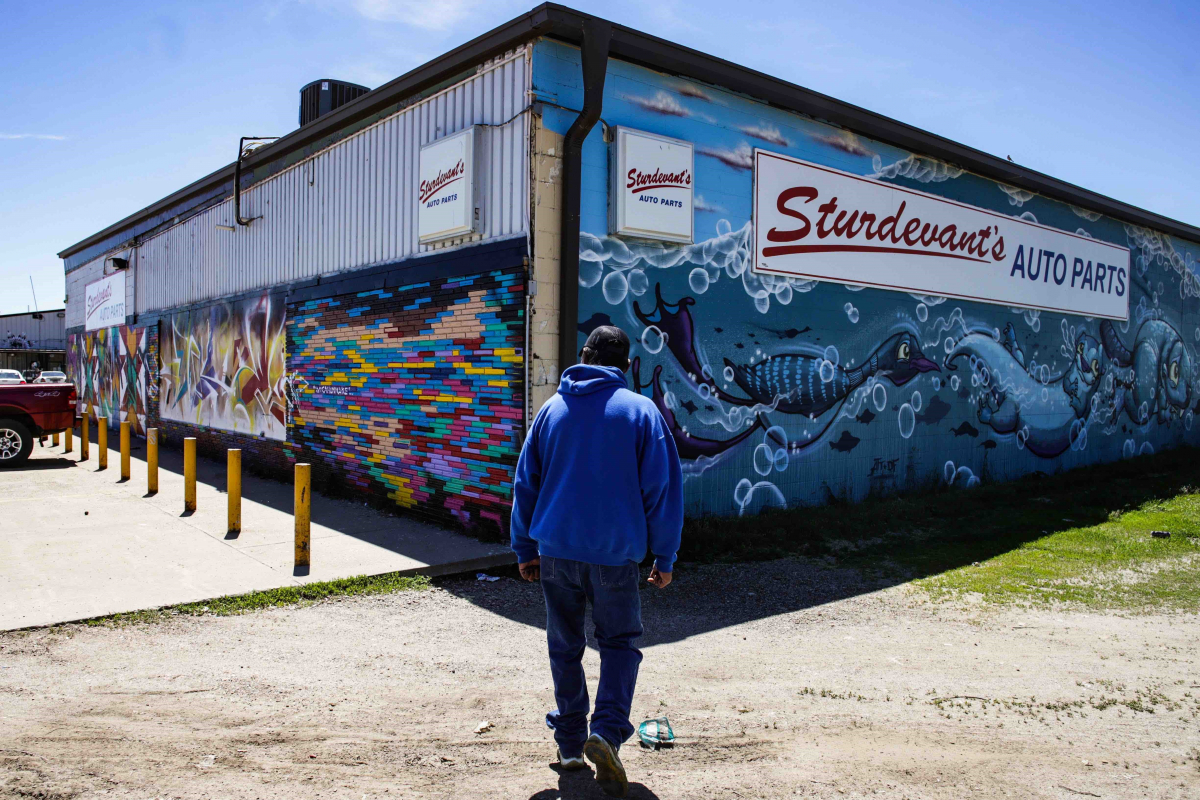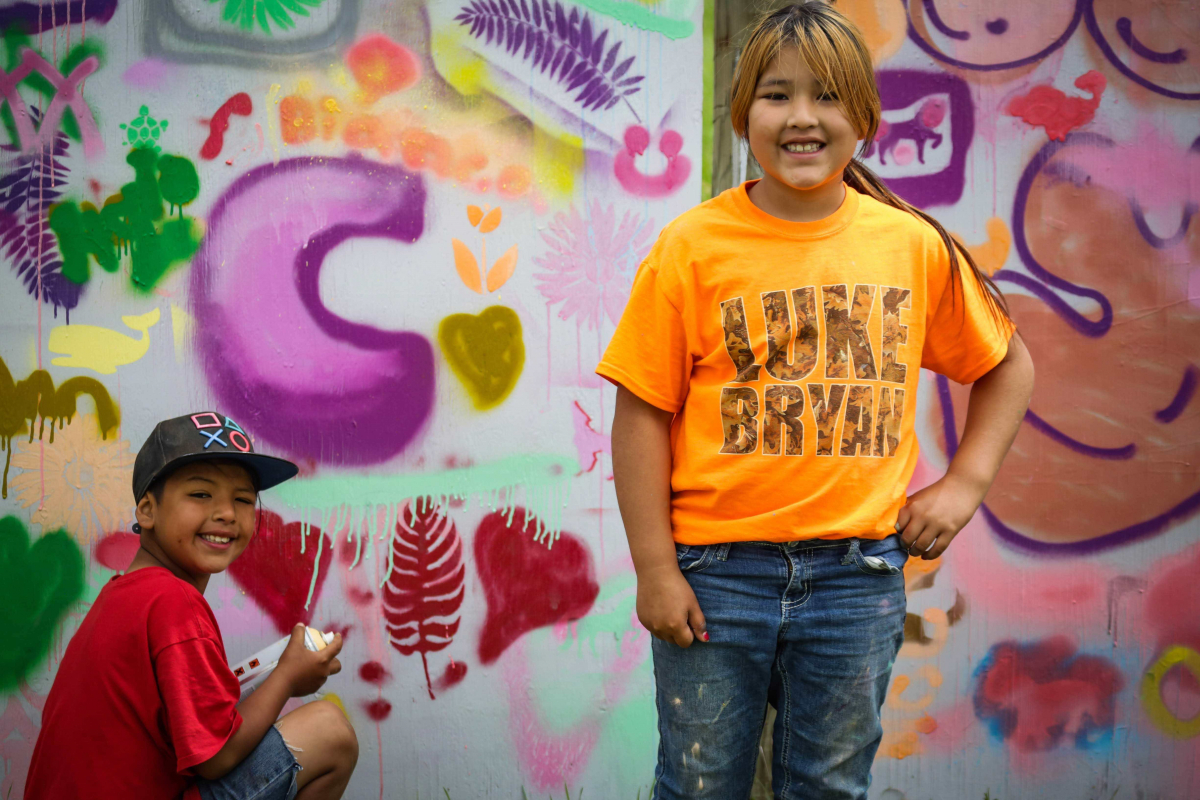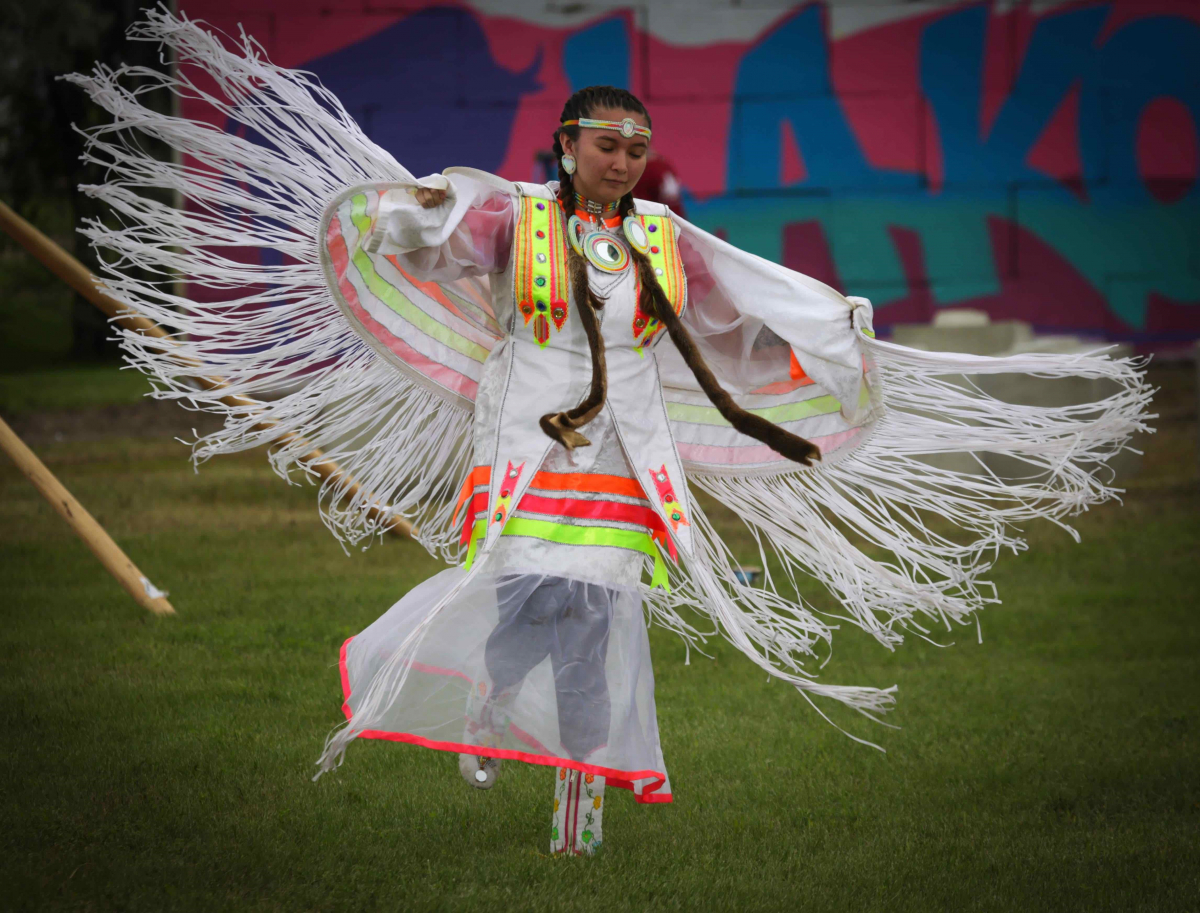
Ms. Julie Garreau
The Radical Importance of RedCan
Posted by Aug 14, 2019 0 comments

Ms. Julie Garreau
Five years ago, I remember feeling profound sadness and disappointment when I thought about the condition of too many buildings in my town of Eagle Butte, South Dakota. Not only were the structures in rough shape; graffiti tagging had further defaced them.
I’ve been the executive director of the grassroots, nonprofit Cheyenne River Youth Project since 1988, and three decades of youth development work here on the Cheyenne River reservation have taught me that our young people need to find healthy ways to explore their identities, find their voices, and share their stories. That’s fundamental to who we are as Lakota people, because for us, art is life. And without a positive outlet for so much youthful creative energy, vandalism is inevitable.
I found myself wondering if CRYP could make a difference. In 2014, we invited a professional graffiti artist to complete a mural in town and provide lettering classes for our teens. We didn’t know it then, but this little test project was the proverbial pebble thrown into a lake, and the ripples are still expanding.
Community members told us they deeply appreciated the cultural reclamation and language preservation inherent in the RedCan murals, which incorporate Lakota stories and words. They told us the murals made them feel proud to be from Eagle Butte.
After receiving positive feedback on that initial mural—and enthusiasm from our kids regarding our fledgling art classes—we forged ahead with plans for our inaugural RedCan graffiti jam in 2015. Our intention was to introduce graffiti as an art form to our community, and showcase how graffiti culture and Lakota culture could come together and even infuse one another.

That first year, our community members weren’t sure how they felt about the murals, or even about the event as a whole. I remember telling my staff and even some of the artists that RedCan might be a one-time thing. I was wrong.
Our community embraced this summer’s 5th annual RedCan invitational graffiti jam in every possible way. For the first two days, our visiting artists painted large-scale murals across the Eagle Butte community, collaborating with local Lakota artists and mentoring our teen art interns. Crowds gathered at the mural sites to watch the masters at work, cars drove past with occupants shouting encouraging words and honking their horns, and RedCan talk filled local businesses.
In fact, that talk has led to valuable new relationships within our community, as business owners reached out to us during this year’s event to see if they could offer their walls for 2020. At this point, we probably have enough walls for the next five RedCans, which is remarkable when I consider how this all began.

Community members told us they deeply appreciated the cultural reclamation and language preservation inherent in the RedCan murals, which incorporate Lakota stories and words. They told us the murals made them feel proud to be from Eagle Butte. And, they said they were grateful for so many important opportunities for Cheyenne River’s young people.
During those first two days, we held youth activities at the Dairy Queen parking lot in town, where we attracted families and children who had never participated in a RedCan event. During the final two days, while the artists were painting in our free, public Waniyetu Wowapi (Winter Count) Art Park, young children and teens converged on the park in droves to participate in a wide variety of activities designed just for them.

As one of our artists, Scape, noted: RedCan isn’t just about the murals. It’s about all the different lenses that RedCan provides. Kids see all the art classes and workshops, the field games, the skateboard painting, the live music, the hoop dancing lessons, the 5K color run. There is so much happening, and for children, that is radically important.
One father told us, “This is the best thing that has ever happened here. I became a dad six years ago, and I wondered if my kids were gonna grow up like I did, with nothing to do, but now they have this.”

Overall, more than 1,500 people participated in RedCan 2019, and 87 percent were young people. They learned from the artists, they claimed their own art spaces, and they experimented with styles and images. They explored themes like native pride, community health, and missing and murdered indigenous women. They expressed their thoughts about happiness, strength, joy, contentment, and the power that comes from spray-painting your feelings onto a wall.
And, in doing so, they took precious steps toward healing—and toward becoming the Lakota Nation’s next generation of culture bearers and storytellers.

During this year’s RedCan, we all felt a vibrant, transformative surge of energy. It lifted up our entire community, and thanks to the murals and the art in the park, that energy will endure until next summer. The artwork itself will endure, because our youth do not tag these murals. Rather, they preserve and protect them. We all do. They’re ours.

RedCan is CRYP’s gift to our community, so we can see our rich culture and beautiful stories on these breathtaking walls. I am both honored and deeply humbled to see the Cheyenne River Lakota Nation take RedCan to its heart as something that belongs to all of us. Like CRYP itself, it is by Cheyenne River, for Cheyenne River.
It didn’t happen all at once. It started with our community work, and then one small art project. Just to try it, to see how people would respond. And now we know.
This post is part of The “Public” In Public Art: Community Engagement Stories From The 2019 PAN Year In Review blog salon.
